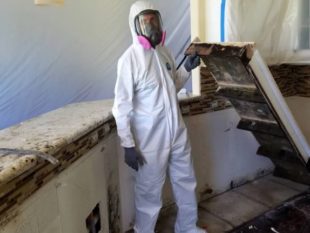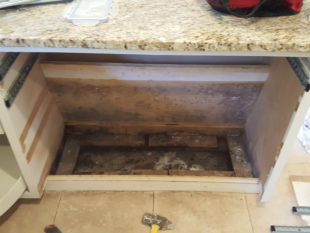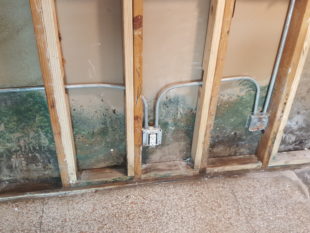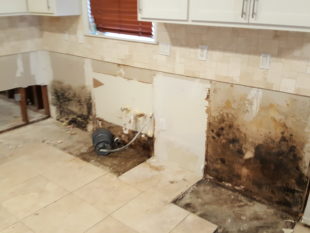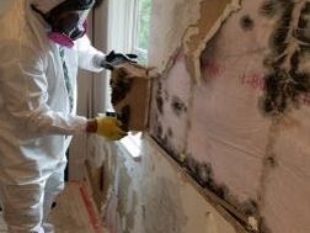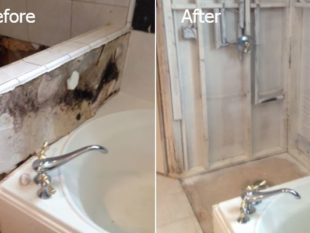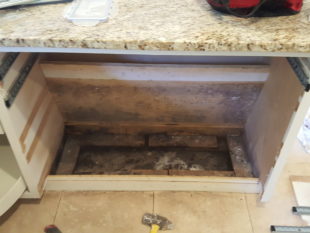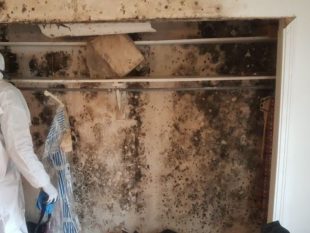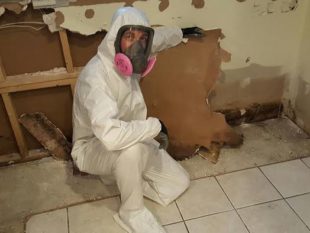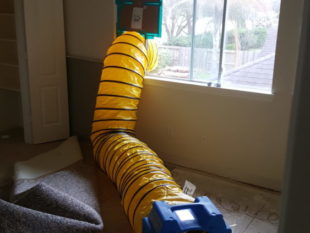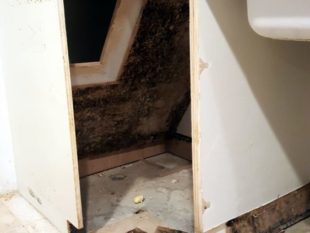Mold remediation is the process of removing the mold, sanitizing the area, and identifying the moisture source.
The remediation process is determined by the size of the contamination and whether occupants are experiencing adverse symptoms related to mold. Since mold destroys the surface materials it is on, remediation can preserve the structural integrity of the building. Failure to address a mold problem ultimately can result in increased replacement and rebuild costs.
Why Does Mold Need to Be Remediated?
- To reduce or prevent adverse health effects
- To preserve the integrity of the structure
- To avoid high replacement or rebuild costs
- To retain the beauty and cosmetic appeal of the structure
- To preserve the resale value of the property
Where is Mold Commonly Located?
- On attic walls, insulation, and ceilings near roof leaks
- On and around wooden joists near pipe condensation
- Under or around leaking air conditioning units
- Near window areas
- Underneath wallpaper in poorly insulated/paneled areas
- Near foundation cracks
- Under flooring (tile, linoleum, carpet)
- Near interior water sources
- Under leaky sinks
- Under wall paneling
- Under wallpaper
- Under trim
- Behind cabinetry
Indoor mold growth may not always be in plain view. If a building smells moldy, there has been a water loss event, or building occupants are reporting health problems, there may be hidden mold.
How do you identify mold issues in a structure?
- You may be able to see the mold. Look for evidence of water intrusion or discolored materials. Check for swollen, separated baseboards, water stains, and/or black, green or gray discolorations.
- You may smell a pungent musty odor.
- An occupant may be sick or suffering from allergic reactions (watery eyes, runny nose, scratchy throat, headaches, asthmatic symptoms).
What are the health risks of mold?
Mold inside a structure is an allergen. Even dried, non-living mold (we refer to this mold is as non-viable) can cause health issues, including:
- compromised breathing
- skin rashes
- asthma
- chronic sinusitis
- chronic bronchitis
- nervous system issues
- cancer
How can mold cause problems inside a structure?
Excess humidity (above 60%) can be caused by a faulty HVAC system and/or a poorly ventilated structure. Spores can start to colonize in less than 48 hours. “Sporulation” is the process of mold releasing its spores for self-preservation. 2 sq. centimeters of aspergillus can release 400 million spores!
Excess moisture in a structure (above 18%) is often related to plumbing issues, HVAC leaks, roof leaks, or window leaks.
Some of the most common types of mold found indoors include: aspergillus, penicillium, chaetomium, and stachybotrys.
Click here to learn about the scientific information, characteristics, and health effects of mold.

